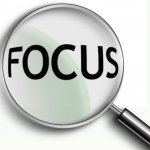Share this post:
 “Do more with less. Work harder. Hurry up. Drop everything. We need this tomorrow. We’re reducing headcount so you’re receiving this extra responsibility. We’re starting a new initiative in which we need you to participate. You need to be at this meeting. And this one. And this one. By the way, why haven’t you responded to my emails?”
“Do more with less. Work harder. Hurry up. Drop everything. We need this tomorrow. We’re reducing headcount so you’re receiving this extra responsibility. We’re starting a new initiative in which we need you to participate. You need to be at this meeting. And this one. And this one. By the way, why haven’t you responded to my emails?”
If you’re like most professionals in the workplace today, this sounds all too familiar. Being extremely busy has become the norm. When you ask someone, “how are you doing?”, you already know the answer—”very busy”.
We are packing more and more into our already busy lives as the scope of what we do increases. Like a project to which we keep adding features, we are becoming the embodiment of scope creep. Never before have people had so many distractions, opportunities, problems, and tasks to do. The list seems to constantly grow. We end many days with more to do than when we started.
Life at home isn’t any better. We have more projects, family activities, hobbies, and personal interests than we can get to. Then there is the time needed to keep up with social media and the world around us. When you add it all up, contemporary society is overwhelmed. Our daily race is wearing us out.
Studies on stress confirm what we already know. Stress is at an all-time high. Employees are overwhelmed. Stress-related health issues are on the rise. Employee engagement and morale are at historically low levels. As a result, as if we are following the fabled Pied Piper, we are unknowingly letting the quality of our relationships and work suffer. We are not encouraging, preparing, learning or giving attention to that which is most important as we should.
And despite people’s attempts to get more done, productivity is decreasing. Research on productivity finds that when employees feel overwhelmed by their workload, they are 68% less productive. In other words, a task that normally takes two hours to complete takes over three hours.
Most organizations are aware of the problem and solutions to workplace stress are proliferating. Wellness programs are being implemented. Flu shots are being offered. “Mindfulness breaks” are being encouraged. Stand-up desks are being installed. Facilities are being upgraded to provide more co-working spaces, relaxing colors, and better lighting. More mobile phone applications are being provided. Training is being given to help people “focus on your strengths.” But are these addressing the real problem?
What is the real problem? The real problem is that people are trying to do too much. Adding more mobile apps, wellness programs, and other initiatives is actually exacerbating the problem. People don’t have time for more initiatives. Yes, some are needed, but more fundamentally people need to be less distracted. They need less to do. They need to get time back.
What might people do to get time back? Better align on and manage expectations? Delegate more? Say “no” to requests? Put conditions on yeses? Be more productive? For most professionals, all of these apply, but be careful about only focusing on increasing productivity. If you are like most people, unless you adopt other time management practices, you’ll merely cram more work into the time you free up and continue to be as overwhelmed and stressed out as you were before.
Studies of people who consistently achieve the highest levels of success find a different solution. Their successes are the result of intense focus. Success usually doesn’t come from doing many things. It comes from doing one thing. At the most, two or three things. It isn’t doing five, ten, or more as many people try to do.
Warren Buffett said, “The difference between successful people and very successful people is that very successful people say “no” to almost everything.” As important as many time management practices are, the real solution to the “I’m overwhelmed” problem is doing less. Success comes from focus, not multitasking.
If you have a project or specific goal you want to achieve, here is a basic yet powerful approach to being more focused and achieving your goal:
- Make the decision to work intentionally and adopt a focus mindset rather than a multitasking one.
- Identify the goal you intend to achieve and the time frame to which you are willing to commit.
- Identify the key activities required to achieve your goal which you will make your top priority and focus.
- Gain agreement from those in your ecosystem on your goal and prioritized activities.
- Focus and execute on your priorities with a small, e.g. 10-20%, allowance for distractions.
- Measure and track your progress to maintain accountability.
Once you have achieved your goal, set another one and repeat the process. Limit the time you allocate to other activities and distractions. Stay focused on the activities that make progress toward your goal. There may be sustaining activities you need to give time to, but unless they are one of your top priorities, be careful to not let them displace what is more deserving of your time and attention.
Share this post:
